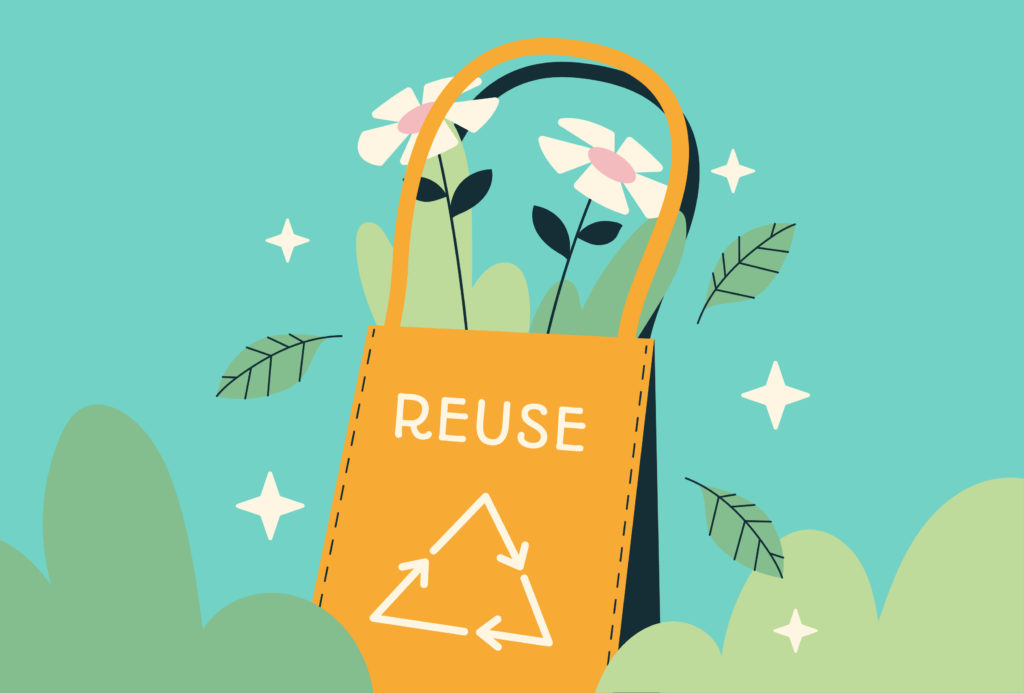Consumer habits have radically changed after COVID-19 pandemic – with a net increase of the online purchase rate by up to 55% more. Think of Black Friday, originated in the U.S. and now internationally popular – actions like these lead to a remarkable number of e-commerce purchases thanks to their special discounts and promotions.
All this entails, in turn, a large amount of packaging that must be recovered from domestic recycling collections so that it can become more sustainable. In particular, it is estimated that plastic packaging in the e-commerce sector accounts for about 15% of the total. It’s a significant amount that should make you think more – especially about circularity and the end-of-life management of materials.
Thus, you may ask yourself: how can I make sure that packaging does not turn into one more source of environmental pollution? A key factor appears to be your attention to design and materials used. For instance, you should use recycled – and in turn recyclable – plastic.
Several companies manufacturing shipping materials, such as bags and envelopes, as well as protective pluriball, are already making packaging from recycled & recyclable plastic.
How can you recognise recycled & recyclable packaging?
You can easily recognise recycled & recyclable packaging – and its recycling rate – by these symbols:


Moreover, some British associations issued a practical guide for recycled plastics in packaging in 2020. This guide provides you with useful technical information, as well as updated regulations, if you would like to start manufacturing more circular packaging. You can download and consult the Recycled Content Used In Plastic Packaging Applications document for free.
Did you know there’s a simple trick to check whether the used material is really a recycled one?
If you hold your packaging material against the light and see some (often even black-coloured) small spots, then you shouldn’t worry, because these are no flaws – quite the opposite! It means that your packaging is truly made of recycled material.
What can you do as consumer?
A basic premise is always ‘buy less, buy better’, that is carefully choosing what to buy before doing it impulsively. Making a good choice is undoubtedly linked to a greater sustainability – not only in terms of bought products, but also anything regarding their packaging.
In fact, it is your duty as consumer to pay attention to the packaging of the products you buy. Today, thanks to a great deal of information provided by brands, you can easily check whether a company is committed to a greater sustainability and pays attention to both recycling and making their own products recyclable.
Packaging from recycled plastic and companies
Fortunately, several companies manufacturing different types of items – from body care products and make-up to detergents & cleaners – are investing in the production of packaging from recycled plastic.
One example is the historic multinational company Henkel, which is already pursuing this production for years – reaching in some cases even 100% of recycled plastic used in their packaging. Their goal is to reach an average of 35% in all their types of packaging such as bottles and tubes by 2025.
Even the cosmetics brand Davines only makes use of plastic materials from post-consumer recycling (thus domestic and not industrial recycling). This company is also working together with Plastic Bank to ‘prevent plastic dispersal in the sea and to contribute to making people’s lives better’.
Plastic Bank is the globally active movement revolutionising recycling systems worldwide to achieve a positive impact not only on the environment, but also on the society and economy.
Are you familiar with the R-PET material?
Then there are useful – if not indispensable – tips to recognise packaging from recycled plastic. One example out of many is R-PET, which is obtained from one of the most recycled materials, that is PET aka polyethylene. R-PET is made from 100% recycled PET bottles. It’s extremely versatile and durable, as well as itself recyclable. Therefore, it’s a remarkably efficient material in terms of circularity, and that’s why today it’s already used by several companies such as Coca-Cola, Recoaro, Ferrarelle, Sanpellegrino with great results.
Have you ever paid attention to what kind of material was used to make the packaging for the shipment of your online purchases? And what about the packaging of these products?
It is essential for you to obtain information so that your purchases will be more sustainable, too!

